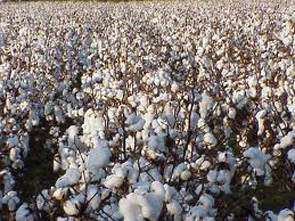DALLAS, Feb. 11, 2017 - Growers are expected to plant 11 million acres of cotton this year, a 9.4 percent increase from 2016, amid continued hopes that Congress or the Trump administration will heed their pleas for new price supports.
Farmers in Texas, which accounts for more than half of U.S. acreage, are expected to plant 6.2 million acres this spring, a 9.5 percent increase, according to the National Cotton Council survey.
The survey was conducted between mid-December and mid-January, and given some strength in the cotton market, actual plantings this spring could be even higher, said Jody Campiche, NCC’s vice president for economics and policy analysis.
When the survey was conducted, cotton futures were trading for about 70 cents a pound, up from 64 cents the year before, said Campiche. As of Friday, the March price for No. 2 cotton was up to nearly 76 cents a pound.
Also, the relative difference between the price of corn and cotton has narrowed, and there is a “clear relationship between changes in the corn to cotton ratio and cotton acreage,” she said, speaking at NCC’s annual meeting.
Meanwhile, House Agriculture Chairman Mike Conaway assured the industry representatives that he is “committed, driven quite frankly,” to finishing a new farm bill next year, and he said he would make sure it includes new prices supports for either cotton fiber or cotton seed.
“We’ve got to get cotton back under Title I. Whether it’s lint or seed, I'm going to get cotton back under Title I,” the Texas Republican said, referring to the commodity section of the farm bill. Cotton is not entirely missing from the commodity title, since the crop remains eligible for marketing loans, but farmers are not eligible for either for Price Loss Coverage (PLC) or the revenue protection program created by the 2014 farm bill, Agriculture Risk Coverage (ARC).
The industry instead opted to rely on a new revenue insurance policy, known as the Stacked Income Protection Plan (STAX), that has proven relatively unpopular with farmers because of a slump in market prices that left them without much hope of getting payments.
The industry unsuccessfully appealed to former Agriculture Secretary Tom Vilsack to allow cotton seed to qualify for the PLC under the reference price for “other oilseeds." He declined the request a year ago, saying he lacked the statutory authority. The industry later modified the proposal and reduced its cost with hopes of getting legislative authority attached to a year-end appropriations measure, but the lame-duck Congress wound up simply approving a continuing resolution that lacked such policy provisions.
Conaway is likely to renew his request with President Trump's nominee for agriculture secretary, Sonny Perdue. Conaway also recently met with the new chairman of the House Appropriations Committee, Rodney Frelinghuysen, R-N.J., to discuss the possibility of addressing the issue in a spending bill this year.
Do you find the information on Agri-Pulse helpful? See even more ag and rural policy news when you sign up for a four-week free trial Agri-Pulse subscription.
The second largest cotton producer, Georgia, is expected to buck the expansion trend, with acreage falling 3 percent to 1.14 million acres. More acreage is expected to be planted to peanuts in Georgia this year, Campiche said.
The Agriculture Department is due to release its 10-year projections for commodity markets and the farm economy on Thursday.
The NCC outlook indicates there are still significant uncertainties in the global cotton market this year. China began auctioning off its reserve stocks last year and will resume doing so in March, one reason why world supplies are expected to decline by 7.7 million bales in 2017. At the same time, "China's stocks and import policy, as well as India's ability to reenter the export market, provide significant uncertainty for global markets. In addition, a struggling global economy and competition from man-made fibers underscore the challenging landscape facing cotton demand," the outlook says.


